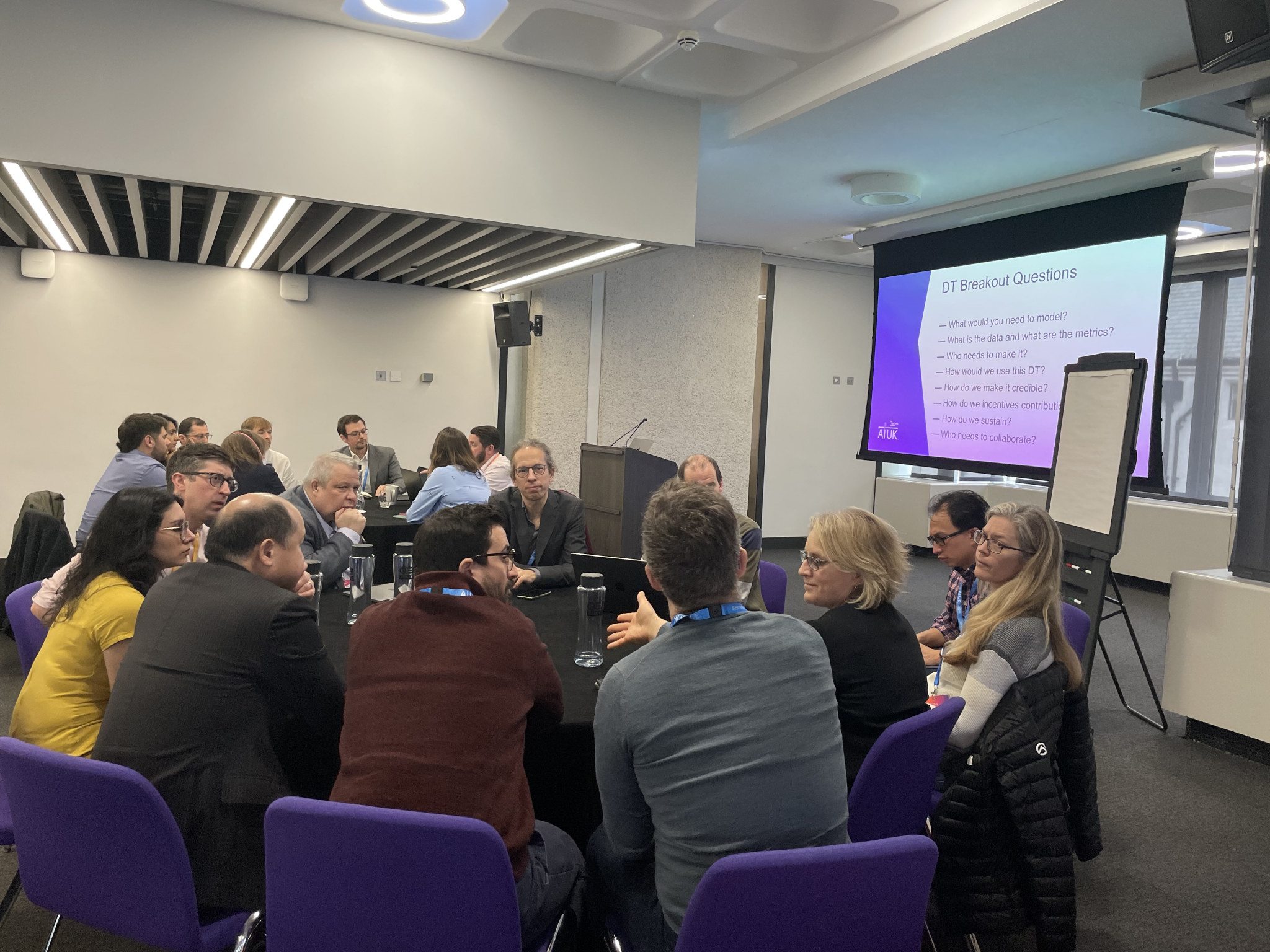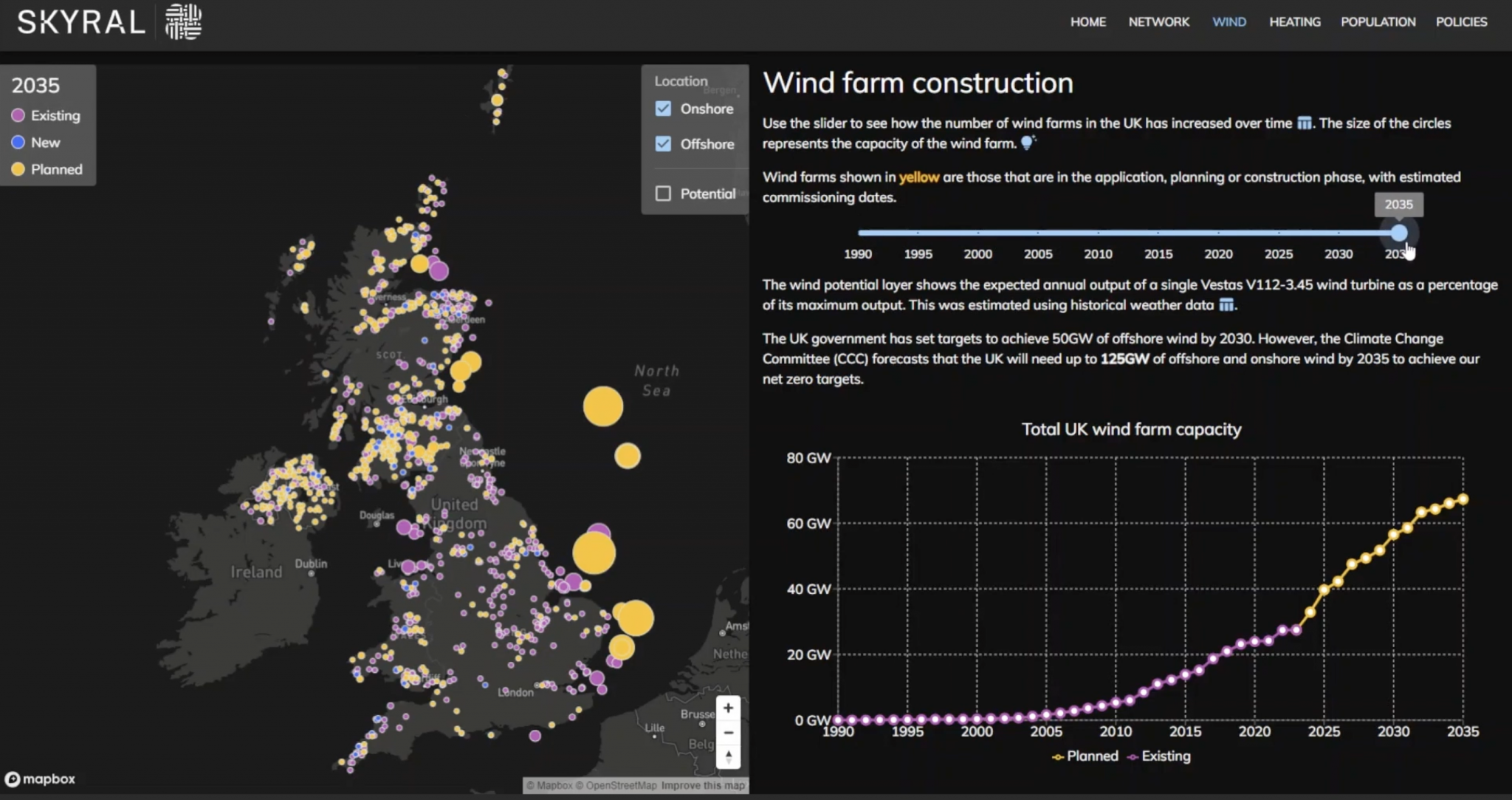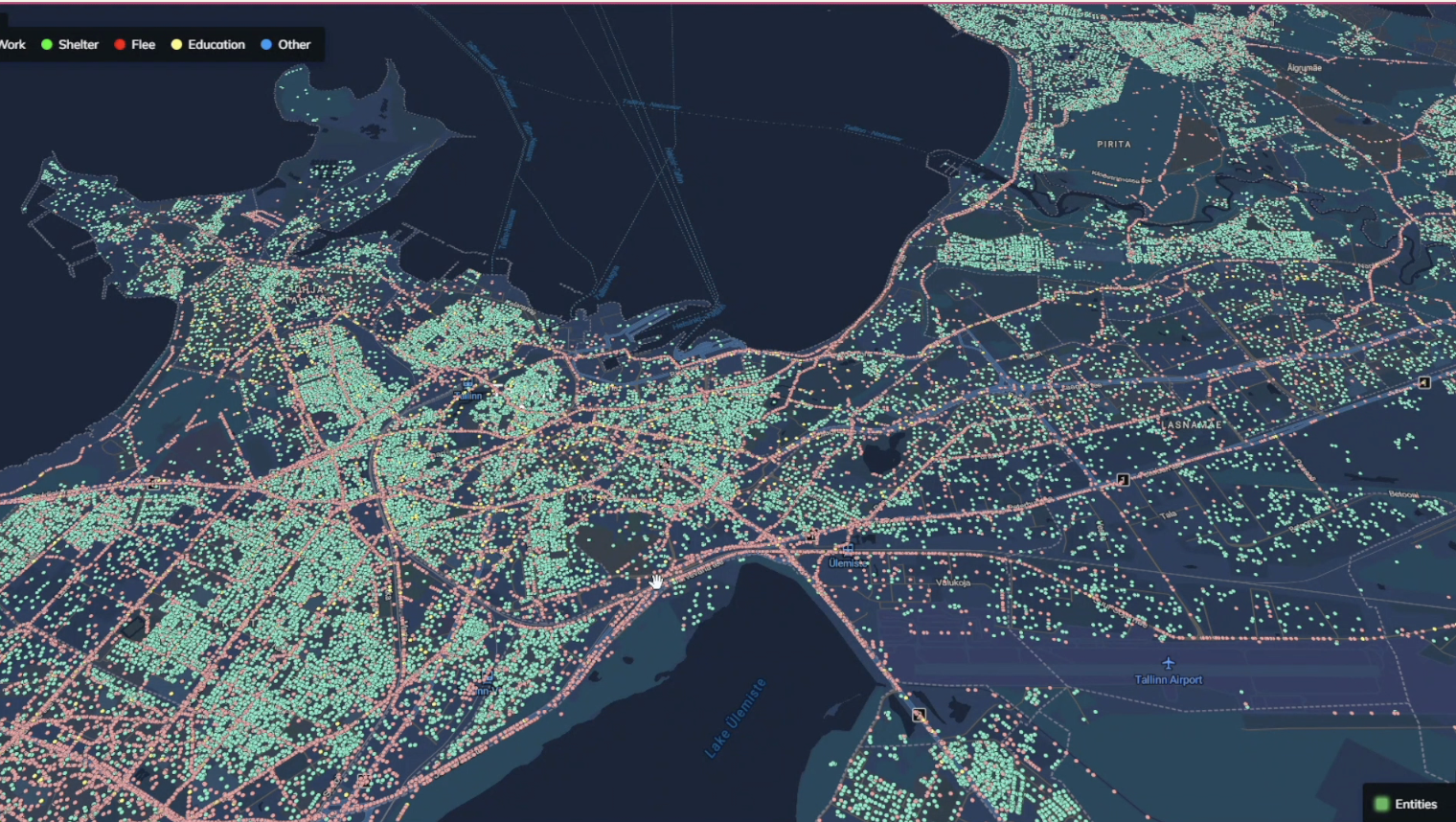
This piece was drafted collaboratively by the Skyral Mental Health First Aiders Team: Victoria Gadd, Cheryl Salvador, Ciara Deeley, Billie Taylor, Nicola Forde, Paul Gammon, and Peter Imrie
Last month, I had the great pleasure of representing Skyral at The Alan Turing Institute’s #AIUKSummit in my first appearance as Skyral’s CEO. I was fortunate enough to join a few of the foremost leaders in urban planning and guided a workshop alongside Nick Malleson and George Economides exploring how we can use #DigitalTwins to help build more resilient and sustainable cities.
It was clear from the engaged audience we hosted that Modelling and Simulation and Digital Twins are playing a massive role in improving urban planning. To borrow the words of Jan Gehl, “First we shape the cities–then they shape us.” This interplay between human behaviours and their adaptations to the environments they live in, as well as the critical need to predict how changes happen across our human terrains, sat at the forefront of our discussions.

Candid shot from a Strategic Digital Twin breakout session at AI UK Summit.
According to the United Nations and the The World Bank, already roughly 55% of the world’s population, that’s 4.4 billion people, live in cities; and by 2050, an additional 2.5 billion more people will be living in cities across the globe. No doubt, our cities face daunting challenges. They are more complex and interconnected than ever before. And the necessity for more sustainable, cleaner solutions is at the forefront of our future.
At the same time, we have more opportunities than ever, and indeed, more novel technologies, to solve our cities’ problems than any era in history. This was made abundantly clear during the AI UK Summit – which only reinvigorates me for the exciting and transformative times we have ahead.
Here are my three big takeaways from the Skyral perspective. Or perhaps in other words, how can we leverage pioneering technologies, like Strategic Digital Twins, to shape the cities of the future.
Traditional modelling is not enough
The first, and arguably most important point that came out of the workshop, was the overall realisation that isolated or siloed systems are inadequate, especially for modelling cities. This is because they fail to capture the complex interdependencies, feedback loops, and emergent behaviours that characterise urban systems. By focusing on a single domain and ignoring the interactions between different systems, these isolated models provide a limited view of urban dynamics, leading to suboptimal and unreliable solutions.
The simple fact is: you don’t know what you don’t know. And if you’re a city planner, if you don’t have the information or insights you need to support complex decision making and planning across the interconnected and multidimensional challenges of a city, you are at a disadvantage from the start.
The next era of urban evolution requires modelling a systems of systems approach that allows us to capture the complex interdependencies and interactions between physical and human systems and integrate models across this scale.

Skyral, working with partners, used a system-of-systems approach for a number of decision-support applications across the UK, in domains such as infrastructure management and rollout, household heating, the distribution of Electric Vehicle charging stations, and public health during the COVID pandemic.
The result? Decision-makers will be able to identify emergent patterns and form more reliable insights and resilient strategies. Those insights make for better decisions that keep people, and their interwoven lives full of rich complexities, at the centre of planning.
Now, I think it’s important to note that the purpose of Digital Twins is not to give our city planners, or really any user, all the answers. Rather, Digital Twins should be used to support decision makers by exploring the broad range of scenarios and the breadth of uncertainties, to provide possible outcomes and the potential or likely impacts of decisions. Providing people with a range of reproducible and explainable outcomes offers them a canvas for discussion, challenge, and alignment that cannot be achieved when all of this critical work is done in isolation (or worse, mostly retained in the minds of a few experts).
Building trust through iteration and transparency
Everyone wants to build a better solution. But in reality, holding back useful technology until it’s ‘better’ only hurts decisions made now. And those are usually the ones that we later need to live with.
In other words, waiting for ‘better’ while the step change we need is here today hinders progress.
We need to adopt that step change now, with the trust that comes from knowing we’ll iterate and constantly improve over time. Being able to expose thinking, potential impacts, and discussion considerations – even against representative models – is better than making decisions while we wait for a future predictive model that might never come.
What does this look like in practice? One option is to deploy a Strategic Digital Twin with a number of models representing a range of interconnected systems of systems that only provides representative outcomes in the here and now. Users must then use these models accordingly – as a stage for discussion, naming assumptions, and challenging relationships between systems, not as predictive models.
The natural fear at this point that I hear most often – and came up during the workshop – is that users will misuse these models, hence the desire to hold back for ‘better’. My counter argument is one, decision makers always use a model of potential outcomes to make decisions. More often than not however, this model is a mental model of relationships and potential outcomes they build in their mind where no one can see it, challenge it and there is only so much complexity you can track at one time. Certainly a representative model based on research and good transparent foundations and assumptions that a team can discuss introduces less risk and more ability to improve the next iteration of decisions. Finally, my second point, having been working with decision makers for almost 20 years now – the weight of their decisions is not lost and that comes with continual challenging of all information provided; through models or otherwise.
Of importance, this cycle not only helps decision makers think through their decision(s) today; it provides a body of evidence of what was considered and what assumptions were made – as well as targets for data collection and new models to focus on for future validation and modelling efforts.
With more feedback and usage of these Digital Twins will come more investment – raising the bar of more models within the ecosystem; to include getting more and more models up to a validated predictive state. These will in turn provide even more insight to each and every decision maker, helping them better navigate the burden of making critical and impactful decisions.
To further accelerate this iterative cycle to better Digital Twins, the further increase of IoTs and future cities planning sensors, feedback systems, and other tracking and calibration mechanisms into their infrastructure projects, we will continue to get closer to more accurate predictive models at a faster pace.

Skyral’s representative 'whole-of-country’ pattern of life model includes over 1m high complexity Agent Based Models (ABMs) based on leading research, papers and partnerships. All reference material and base assumptions include full transparency for decision makers and experts to interrogate, iterate and build trust.
Collaboration is more than a buzzword
The best way to solve these problems is together – Government, Defence, Academia and Industry – working in true partnership. We can’t understate the immensity of challenge: transforming our urban centres is a historical feat. And that means the complexity and volume of modelling required cannot be solved by one organisation.
We need to develop a thriving ecosystem where modelling and data from many vendors can be integrated with common API’s, tooling, and standards to achieve a thriving solutions marketplace that allows more people to go beyond ‘what is?’ and answer the most critical ‘what ifs?’
The necessity of true collaboration came up time and time again throughout the workshop. Undoubtedly, organisations are palpably aware of the need to work together. Yet, the struggle to do so is as real now as when I entered the market almost 20 years ago. Having seen it play out across many countries and organisations – and having seen platform enabled solutions establish thriving ecosystems in so many other markets – I believe the continued challenge is finding the real incentive to collaborate, especially when incentives are overall, perhaps, misaligned across these communities.
To surpass these frictions we need momentum. Enough momentum to establish an ecosystem that allows for a network effect to take over and make it self-sustaining. I’m not going to try and tackle this one here – as many people have and continue to try and solve this, but I would be remiss to not mention that this must be the end state. Aligned collaboration around technology – the adoption of it and its purpose – will shape the cities we want and need.
We just need enough momentum to get started. And if the energy at AI UK was anything to go by, that momentum is starting to build.

This piece was drafted collaboratively by the Skyral Mental Health First Aiders Team: Victoria Gadd, Cheryl Salvador, Ciara Deeley, Billie Taylor, Nicola Forde, Paul Gammon, and Peter Imrie
Skyral People Team

Jason Kennedy